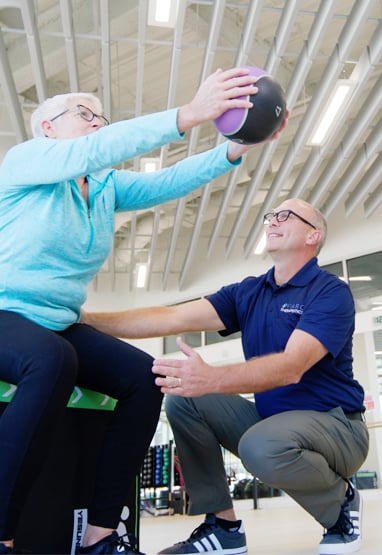Am I Overtraining?
One of my favorite pieces of advice in the fitness realm is that exercising too much can be just as detrimental as not exercising enough. You may wonder how this may be. When it comes to exercise, isn’t more always better? Overtraining or overtraining syndrome is a danger associated with too much exercise that can be very harmful to your body and performance over time. By discussing overtraining, common signs and symptoms to be observant for, and how to safely increase exercise volume over time, you can help maximize your fitness routine without worry.
Overtraining will not occur overnight. The true dangers of overtraining happen over time when the body works too hard with not enough rest. Overreaching is like a halfway point to overtraining and typically presents itself as excess muscle soreness for an acute amount of time such as several training days. This type of soreness is different than how you may feel if you’ve just returned to exercising again after a period of not working out consistently. It’s also different than being extra sore after one killer workout. The key is excess soreness for several days. While grinding it out in the gym is often promoted, rest is crucial. Working to the max without allowing the body to properly recover can put you at risk. If overreaching is occurring, the best thing to do is take a step back in the gym and allow the body to fully recover and for the soreness to dissipate.
What happens then, when someone begins to experience overtraining syndrome? After pushing through the body’s signs of being extra fatigued and sore, other negative symptoms will begin to present themselves. Performance in the gym will likely drop while effort increases. The individual may feel extra fatigued throughout their day, while also experiencing insomnia. Stress levels can increase, and the risk of developing depression or getting sick also increases.
Overtraining can be a scary thing to discuss, but understanding these symptoms and how this syndrome develops can help ensure you don’t push your body to this point. If you are concerned that you or someone you know is experiencing overtraining, the best thing to do is to reach out to a fitness or medical professional. These professionals are trained to help you best recover and may offer you specific guidelines to help this process go smoothly so you can gradually and safely return to the gym.
What is the best way to safely increase your workload for exercise? Simply put, take it slow and listen to your body. It’s okay to stray from a workout routine or to take an extra rest day if you aren’t feeling well. In fact, for those who regularly train, taking a rest week every few months can help you continue meeting your personal goals and keep the muscles and mind feeling fresh. For cardio, increase your time/miles gradually, typically by no more than 10% each week so the body has a chance to adapt to your training. With weight training, try increasing your weight when you can finish your sets with enough energy to complete an extra 1-2 reps. By being aware of overtraining and safely increasing your workload, you can achieve your fitness goals safely and effectively.
.jpg)


